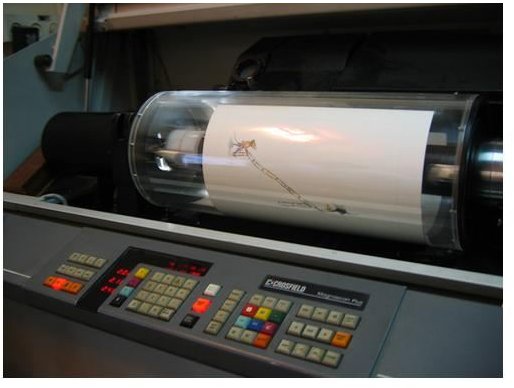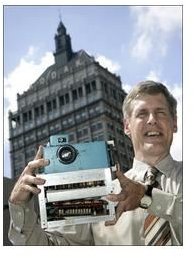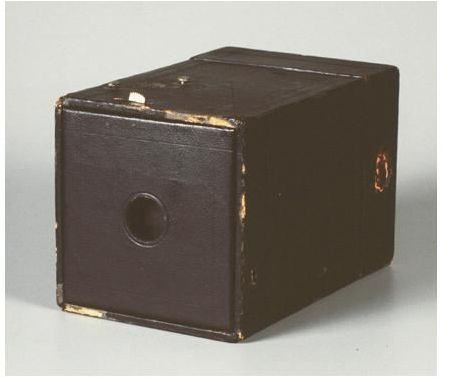History of Photography - From George Eastman To Digital Cameras
To read about the earlier developments of the camera, please see:
The History of Photography - The Early Days
George Eastman and Kodak
George Eastman must have realized the great potential for the camera. He wanted to see the art of photography simplified, and a camera in the hands of everyone, not just professionals. In 1883 he introduced film in rolls and five years later, in 1888 Eastman made available to the public the first Kodak camera. With enough film to take 100 pictures the camera was small enough to transport and operate easily. Once all the pictures were taken, everything, including the camera, was sent back to the Kodak company in Rochester, NY. The pictures were developed and prints made, another roll of film inserted into the camera, and everything was shipped back to the customer. Kodak’s slogan was “You press the button – we do the rest”.
By 1891 the company was marketing its first daylight loading camera. This was a big improvement because it meant the photographer could reload his camera without using a darkroom. In 1895 Kodak introduced the Pocket Kodak Camera. Using roll film, this camera had a small window that allowed the number of exposures to be read. In 1900 Kodak started selling the now well known Brownie Camera for $1.00 and the film for 15¢ per roll. Photography had now become affordable for the general public.
(Click on images to enlarge)
Photography Evolves
For the next few decades there were many improvements to the different aspects of the camera. Faster film, the first 35mm still camera and the invention of the flash bulb just to name a few. It wasn’t until 1957 that the digital age of photography started to evolve.
It started with the development of a “drum scanner” by Russell Kirsch.

This device didn’t actually take pictures but rather copied images that had already been taken and saved it as a binary, or digital, signal. In the 1960’s the space race was well under way, and politicians realized if they could get a satellite up into space, they could take pictures of their adversaries. The trouble was there would be no way to develop the pictures up in space. They would have to return the satellite back to earth to retrieve the pictures and if something happened to the satellite before it returned home, they would have no pictures at all. Then there was the cost of such a venture. Digital cameras became the answer. They could take the pictures and “beam” the images back to earth. Since the image is actually a signal, they had to decode the image in order to view the pictures taken. This was a big step in the development of photographic equipment and digital photography.
The Move to Digital
In 1973, engineer Steven Sasson was able to use a CCD, or charged coupled device, to produce a digital image. When light hits the CCD as a photo is taken, the analog CCD converts the information to a digital image. This early attempt produced a picture that was only 0.1 megapixels, but proved the technology was definitely viable. The first digital camera was born.

Sony Moves in on the World of Photography
Sony took the next step in digital development when they brought out the Mavica (magnetic video camera). Images were stored onto a 2 inch floppy disk, and then viewed on a television or video monitor. This was a pretty big development because it meant that the photographer could store an unlimited amount of pictures by simply inserting another blank disk into the camera. Since the capacity of these disks was under 1 MB, and typically these disks held approximately 25 pictures, the next logical step was more megapixels.
Photography Continues to Make History
With the development of storage cards that can hold upwards of 4 gigabytes of information, which in turn translates into possibly hundreds of pictures, it’s easier than ever for even the novice photographer to capture that special picture. Add to that the affordability of digital cameras today and it’s easy to see why consumers have embraced photography.
Digital cameras continue, even today, to improve with more megapixels translating into higher resolution pictures. Digital SLR cameras (single-lens reflex) are fast becoming the next “must have” for even amateur photographers. When first introduced they were aimed at the professional photographer, with interchangeable lenses and higher resolution photos than that of the consumer models. With the ability to either manually focus or set to auto focus, adjust for lighting conditions and the many other added features and extra accessories the SLR is quickly replacing the 35mm film camera.
This post is part of the series: The History of Photography - From the Fourth Century to Today
Have you ever wondered where photography came from? When was the first camera invented? Who invented photography? How has photography developed over the years? This article series will teach you about the history of photography and the origins of the camera.
